Blog, CAVAPOO BLOG
The Ultimate Guide to the Mini Cavapoo: Your Complete Companion to This Adorable Breed
Introduction to the Mini Cavapoo
The Mini Cavapoo, a delightful cross between the elegant Cavalier King Charles Spaniel and the intelligent Miniature Poodle, has swiftly become one of the most beloved designer dog breeds worldwide. With their soulful eyes, teddy-bear-like appearance, and affectionate demeanor, these pint-sized companions capture hearts effortlessly. Whether you’re a family seeking a playful pet, a senior looking for a loyal friend, or a single individual wanting a furry companion, the Mini Cavapoo’s versatility makes it an ideal choice.
This comprehensive guide, crafted with over 2,000 words of in-depth information, explores every facet of the Mini Cavapoo—its history, personality, care requirements, training, health concerns, and more. Whether you’re researching Mini Cavapoo puppies for sale or seeking tips to care for your new pet, this article provides everything you need to make an informed decision and ensure a happy, healthy life for your furry friend.
Owning a Mini Cavapoo is a rewarding experience, but it comes with responsibilities. Their small size, low-shedding coat, and friendly nature make them a favorite for many, yet their need for attention, grooming, and proper care requires dedication. By delving into their unique traits and needs, this guide aims to equip you with the knowledge to provide the best home for a Mini Cavapoo, ensuring years of joy and companionship.
The Rich History and Origin of the Mini Cavapoo
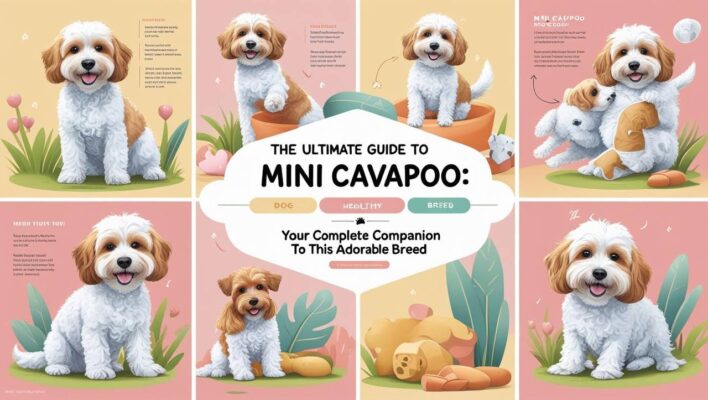
The Mini Cavapoo’s story begins in the late 1990s, primarily in Australia and the United States, during the rise of designer dog breeds. Breeders sought to create a companion that combined the best traits of two beloved purebreds: the Cavalier King Charles Spaniel and the Miniature Poodle. The goal was to craft a small, affectionate dog with a low-shedding coat, perfect for families and individuals, including those with allergies. This intentional crossbreeding resulted in the Mini Cavapoo, a hybrid that’s not recognized as a purebred by organizations like the American Kennel Club (AKC) but has earned a devoted following for its charm and versatility.
The Cavalier King Charles Spaniel, one of the Mini Cavapoo’s parent breeds, boasts a regal history dating back to 17th-century England. Named after King Charles II, who was rarely seen without his beloved spaniels, these dogs were cherished by royalty for their elegant appearance and gentle temperament. With their silky coats and expressive eyes, Cavaliers became symbols of loyalty and companionship, traits that shine through in the Mini Cavapoo’s affectionate nature.
On the other side, the Miniature Poodle brings intelligence and a hypoallergenic coat to the mix. Originally bred in Germany as water retrievers, Poodles were later miniaturized in France, where they became fashionable companions. Known for their curly, dense coats and sharp minds, Miniature Poodles contribute the Mini Cavapoo’s intelligence and low-shedding qualities, making the breed a favorite for those seeking a pet that’s both smart and allergy-friendly. Together, these parent breeds create a dog that’s as charming as it is practical, appealing to a wide range of pet owners.
RELATED: 10 Reasons Why the Cavapoo is the Top Dog
Physical Characteristics: The Mini Cavapoo’s Endearing Appearance
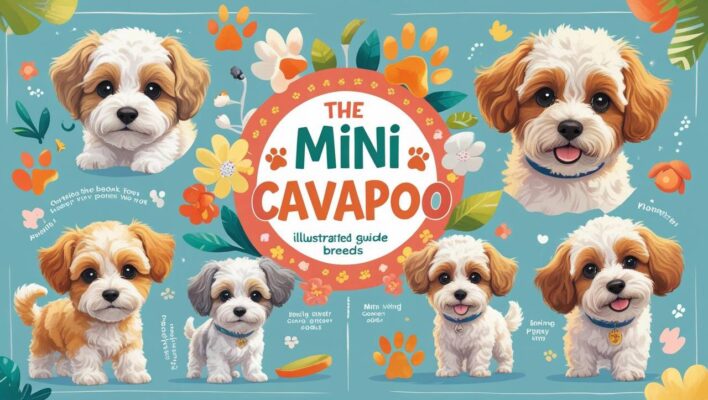
Mini Cavapoos are small but sturdy, typically weighing between 10 and 20 pounds and standing 12 to 15 inches tall at the shoulder. Their compact size makes them perfect for various living situations, from cozy apartments to spacious homes. However, their appearance can vary depending on which parent breed’s genetics dominate, resulting in a delightful range of looks that add to their appeal.
The Mini Cavapoo’s coat is one of its standout features, often described as soft and luxurious. It can range from wavy, reminiscent of the Cavalier’s silky fur, to tightly curled, like the Poodle’s dense coat. This low-shedding quality makes them a great choice for allergy sufferers, though no dog is entirely hypoallergenic. Their coats come in a variety of colors, including apricot, cream, black, chocolate, tri-color (black, white, and tan), and ruby—a rich reddish-brown. Regular grooming is essential to keep their coat healthy and free of mats, a topic we’ll explore further in the care section.
Beyond their coat, Mini Cavapoos are often called “teddy bear dogs” for their round faces, soulful eyes, and button noses. Their floppy ears and compact, well-proportioned bodies enhance their puppy-like charm, which persists well into adulthood. This endearing appearance, combined with their small size, makes them irresistible to dog lovers seeking a pet that’s both adorable and manageable.
Temperament and Personality: The Heart of the Mini Cavapoo
The Mini Cavapoo’s personality is a perfect blend of its parent breeds, combining the Cavalier’s warmth and affection with the Poodle’s intelligence and playfulness. These dogs are known for their unwavering devotion to their owners, often described as “velcro dogs” for their love of staying close. Whether curling up on the couch or joining you for a walk, Mini Cavapoos thrive on human interaction, making them exceptional companions for families, singles, and seniors alike.
Their affectionate nature makes them wonderful with children, provided the kids are taught to handle small dogs gently. Mini Cavapoos are also highly social, greeting strangers and other pets with enthusiasm rather than aggression or shyness. This sociability, paired with their gentle demeanor, makes them ideal for households with multiple pets or frequent visitors. However, their strong attachment can lead to separation anxiety if left alone for extended periods, so owners should prioritize training and socialization to build confidence.
Intelligence is another hallmark of the Mini Cavapoo, inherited from the Poodle’s sharp mind. They learn quickly and respond well to training, making them a joy for owners who enjoy teaching tricks or commands. Their playful energy adds a fun dynamic, as they love interactive games like fetch or puzzle toys. Despite their liveliness, they also have a calm side, happily lounging with their owners after a day of activity. This balance of playfulness and tranquility makes the Mini Cavapoo a versatile companion for various lifestyles.
Caring for Your Mini Cavapoo: A Commitment to Their Well-Being
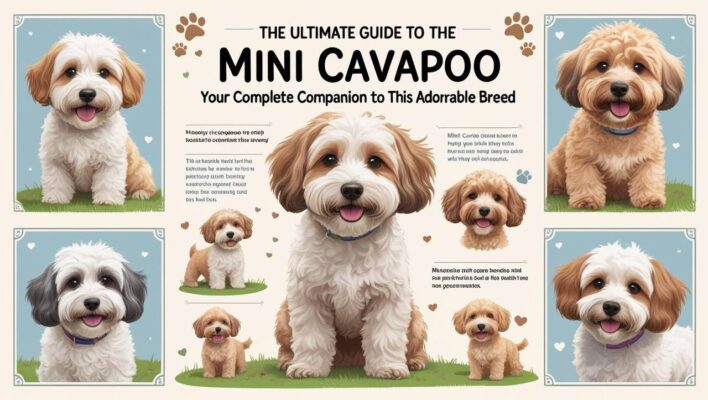
Owning a Mini Cavapoo is a rewarding experience, but it requires dedication to their physical, emotional, and social needs. From grooming to exercise and nutrition, providing proper care ensures your Mini Cavapoo thrives.
Grooming: Keeping Their Coat in Top Shape
The Mini Cavapoo’s luxurious coat requires consistent care to maintain its beauty and health. Their wavy or curly fur can become matted if neglected, so brushing 3–5 times a week with a slicker brush or comb is essential to remove tangles and loose hair. Bathing every 4–6 weeks with a gentle, dog-specific shampoo keeps their coat clean without irritating their skin. For a polished look, professional grooming services every 6–8 weeks can maintain a manageable coat length and enhance their teddy-bear appearance.
Beyond their coat, Mini Cavapoos need regular ear cleaning to prevent infections, as their floppy ears can trap moisture and debris. Weekly cleaning with a vet-approved solution is recommended. Nail trimming every month prevents overgrowth, which can cause discomfort, and daily or frequent teeth brushing helps avoid dental issues, a common concern in small breeds. Investing in high-quality pet supplies for Mini Cavapoo grooming, such as brushes, combs, and shampoos, simplifies this routine and keeps your dog looking and feeling their best. Exercise: Balancing Activity and Rest
Mini Cavapoos have moderate energy levels, requiring a balance of physical activity and mental stimulation to stay healthy and content. Daily walks of 30–45 minutes, split into one or two sessions, provide the exercise they need to burn energy and maintain a healthy weight. These walks also offer opportunities for socialization, as Mini Cavapoos love exploring new environments and meeting people or other dogs.
In addition to walks, interactive playtime is crucial. Games like fetch, tug-of-war, or hide-and-seek with treats keep them engaged and strengthen the bond with their owners. Puzzle toys or treat-dispensing devices are excellent for mental stimulation, tapping into their Poodle-inherited intelligence. For owners with access to a dog park, regular visits allow Mini Cavapoos to socialize and play, satisfying their social nature. While they’re not as high-energy as some breeds, neglecting their exercise needs can lead to boredom or behavioral issues, so consistency is key.
Nutrition: Fueling Their Health
A balanced diet is the foundation of a Mini Cavapoo’s health, supporting their coat, energy levels, and overall well-being. High-quality dog food formulated for small breeds, rich in protein, healthy fats, and essential vitamins, is ideal. Owners should feed 1–1.5 cups of dry kibble daily, divided into two meals to prevent overeating and maintain a healthy weight. Consulting a veterinarian ensures the diet meets your dog’s specific needs based on age, weight, and activity level.
Treats should be used sparingly, as Mini Cavapoos are prone to weight gain, which can exacerbate joint or heart issues. Fresh water must be available at all times, and owners should avoid feeding table scraps or toxic foods like chocolate, grapes, or onions. For optimal nutrition, consider premium dog food for small breeds, which often includes ingredients tailored to support coat health and digestion. Regularly monitoring your dog’s weight and adjusting portions as needed keeps them in top shape.
RELATED: The Best Food For Cavapoos
Training and Socialization: Shaping a Well-Behaved Companion
Mini Cavapoos are a trainer’s dream, thanks to their intelligence and eagerness to please. Their Poodle heritage makes them quick learners, while their Cavalier side ensures they’re motivated by praise and affection. Positive reinforcement—using treats, praise, or play—yields the best results, as harsh methods can stress this sensitive breed. Start with basic commands like sit, stay, come, and leave it to establish good manners, and progress to more advanced tricks to keep their minds engaged.
House training should begin early, using a consistent schedule and crate training to establish routines. Mini Cavapoos respond well to routine, so regular feeding and potty times help them learn quickly. Leash training is also important, as their small size can lead to pulling if not addressed early. Patience and consistency are key, as their intelligence allows them to pick up habits—good or bad—quickly.
Socialization is equally critical to ensure a well-adjusted Mini Cavapoo. Expose them to various people, animals, and environments from a young age, ideally starting at 8–12 weeks. Puppy classes, dog park visits, or walks in busy areas introduce them to new sights, sounds, and experiences, reducing the risk of fearfulness or anxiety. A well-socialized Mini Cavapoo grows into a confident, friendly adult, ready to handle any situation with ease.
Health Considerations: Keeping Your Mini Cavapoo Thriving
Like all breeds, Mini Cavapoos are prone to certain health issues inherited from their parent breeds. Understanding these risks and prioritizing preventive care ensures a long, healthy life for your pet. Regular veterinary checkups, a balanced diet, and a healthy lifestyle are crucial.
Common health concerns include Mitral Valve Disease (MVD), a heart condition from the Cavalier side, which may present as a heart murmur and requires early detection through vet visits. Hip dysplasia, inherited from Poodles, can cause joint pain or lameness, while patellar luxation—a slipping kneecap—is common in small breeds and may need surgical correction in severe cases. Their floppy ears make them prone to infections, so weekly cleaning is essential. Progressive Retinal Atrophy (PRA), an eye condition, can lead to vision loss, so regular eye exams are recommended.
Preventive care includes annual vet visits for vaccinations and checkups, spaying or neutering to reduce certain health risks, and consistent parasite control for fleas, ticks, and heartworms. Maintaining a healthy weight prevents strain on joints and the heart, and dental care—through regular brushing or dental chews—helps avoid common small-breed dental issues. With proper care, Mini Cavapoos typically live 12–15 years, offering years of love and companionship.
Living with a Mini Cavapoo: Creating the Perfect Home
Mini Cavapoos adapt well to various living situations, from apartments to houses with yards, thanks to their small size and moderate exercise needs. However, their need for companionship means they thrive in homes where they receive ample attention. They’re ideal for families with gentle children, seniors seeking a low-maintenance companion, or singles who enjoy an active lifestyle with a pet. Their low-shedding coat also makes them a great choice for allergy sufferers, though regular grooming is non-negotiable.
To create a safe and welcoming home, secure toxic substances, small objects, or cords that a curious Mini Cavapoo might chew. Provide a cozy bed or crate for rest, and set up a designated feeding and water area. Their social nature means they’ll want to be near you, so consider a pet gate to keep them safe without isolating them. For owners away for long hours, separation anxiety can be a concern, so gradual training to tolerate alone time is essential.
Finding a Mini Cavapoo: Choosing the Right Source
Bringing a Mini Cavapoo into your life requires careful consideration of where to get your new pet. Reputable Mini Cavapoo breeders prioritize health testing for both parent breeds, ensuring puppies are free from genetic issues like MVD or PRA. When visiting a breeder, ask about health clearances, socialization practices, and the parents’ temperaments. A good breeder will provide a health guarantee and contract, and their facilities will be clean and caring.
Alternatively, Cavapoo adoption through rescues or shelters is a wonderful option, giving a dog a second chance at a loving home. Many designer breeds end up in rescues, and adoption can be more affordable than purchasing from a breeder. Costs for a Mini Cavapoo from a breeder typically range from $1,500 to $3,000, with additional expenses for initial supplies ($200–$500), annual vet care ($300–$700), and grooming or food ($500–$1,000 yearly). Budgeting for these costs ensures you’re prepared for the commitment.
Pros and Cons of Owning a Mini Cavapoo
The Mini Cavapoo offers many benefits, but like any breed, they come with challenges. Their affectionate and loyal nature makes them exceptional companions, and their low-shedding coat is a boon for allergy sufferers. Their intelligence and trainability make them a joy to work with, and their adaptability suits various homes. With proper care, their 12–15-year lifespan ensures years of companionship.
On the downside, their need for attention can lead to separation anxiety, making them less suited for owners away for long hours. Their grooming requirements are time-intensive and costly, and they’re prone to health issues like MVD or patellar luxation. The initial purchase price and ongoing care costs can also be significant, so financial planning is essential.
FAQs About Mini Cavapoos
1. Are Mini Cavapoos truly hypoallergenic?
While no dog is 100% hypoallergenic, Mini Cavapoos are considered low-shedding due to their Poodle heritage, making them a good choice for allergy sufferers. Regular grooming, including brushing and bathing, minimizes dander and allergens, enhancing their suitability for sensitive households.
2. How much exercise does a Mini Cavapoo need daily?
Mini Cavapoos require 30–45 minutes of daily exercise, such as walks or playtime, to stay healthy and prevent boredom. Mental stimulation through puzzle toys or training sessions is equally important, given their intelligent nature, ensuring they remain engaged and content.
3. Are Mini Cavapoos good with young children?
Yes, their gentle and playful temperament makes them excellent companions for children who are taught to handle small dogs carefully. Supervision is recommended to ensure interactions are safe, as their small size makes them delicate.
4. How often should I groom my Mini Cavapoo?
Brush their coat 3–5 times weekly to prevent matting, bathe every 4–6 weeks with gentle shampoo, and schedule professional grooming every 6–8 weeks. Weekly ear cleaning and monthly nail trimming, along with frequent teeth brushing, maintain their overall health and appearance.
5. What health issues are common in Mini Cavapoos?
They may be prone to Mitral Valve Disease, hip dysplasia, patellar luxation, ear infections, and Progressive Retinal Atrophy. Regular vet checkups, a healthy diet, and proper grooming help mitigate these risks and ensure early detection.
6. Where can I find Mini Cavapoo puppies for sale?
Reputable Mini Cavapoo breeders who provide health clearances are the best source. Visit their facilities, ask about the parents’ health, and ensure proper socialization. Alternatively, check rescues or shelters for Cavapoo adoption opportunities.
7. How much does owning a Mini Cavapoo cost?
Purchase prices range from $1,500–$3,000 from reputable breeders. Annual costs, including premium dog food, grooming services, and vet care, can total $1,000–$2,200, with initial supplies adding $200–$500.
8. Are Mini Cavapoos easy to train?
Their intelligence and eagerness to please make them highly trainable. Positive reinforcement, using treats and praise, works best. Start with basic commands and early socialization to shape a well-behaved, confident dog.
9. Can Mini Cavapoos live in apartments?
Their small size and moderate exercise needs make them ideal for apartment living. Regular walks, playtime, and attention ensure they thrive in smaller spaces, provided their social and mental needs are met.
10. What should I feed my Mini Cavapoo?
Feed high-quality dog food for small breeds, providing 1–1.5 cups daily, split into two meals. Choose foods rich in protein and vitamins, and consult your vet for tailored recommendations to support their health and coat.
Conclusion: Is a Mini Cavapoo Right for You?
The Mini Cavapoo is a charming blend of affection, intelligence, and beauty, making it an ideal companion for those willing to meet its needs. Their low-shedding coat, playful yet gentle nature, and adaptability suit a wide range of households, from families to seniors. However, their grooming requirements, potential health concerns, and need for companionship demand commitment. By choosing reputable Mini Cavapoo breeders or exploring Cavapoo adoption, and investing in quality care, you can enjoy 12–15 years of love and joy with this delightful breed. This guide equips you with the knowledge to make an informed decision and provide a loving, nurturing home for your Mini Cavapoo.
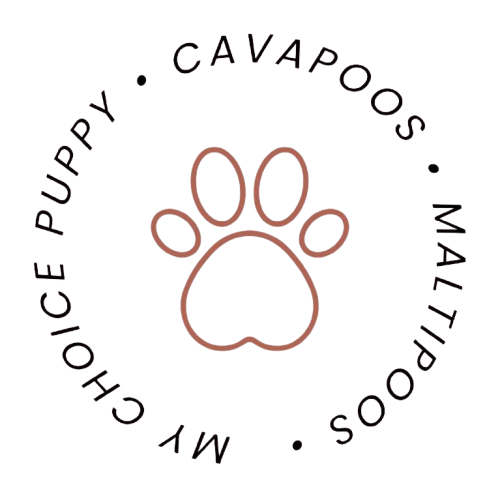
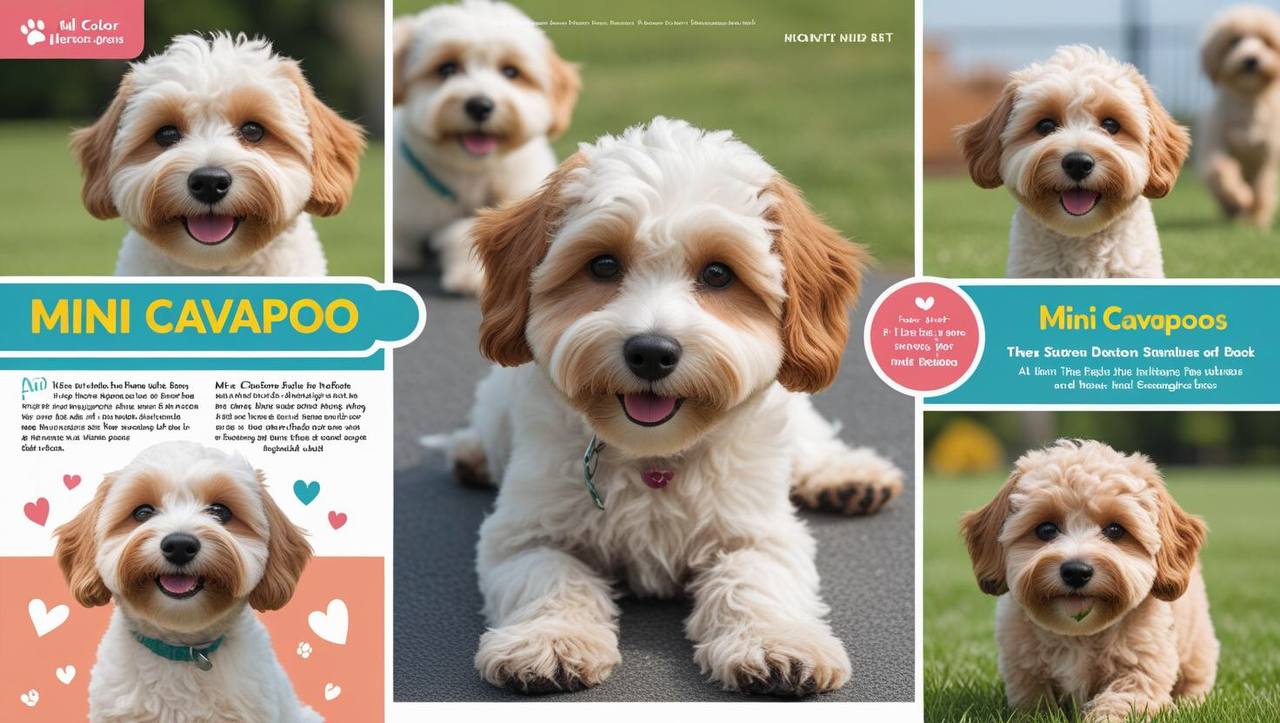
Pingback: Maltipoo vs Cavapoo: 10 Amazing Difference ( With Pictures)
Pingback: Stress-Free Adventures: Best Cavapoo Travel Guide 2025